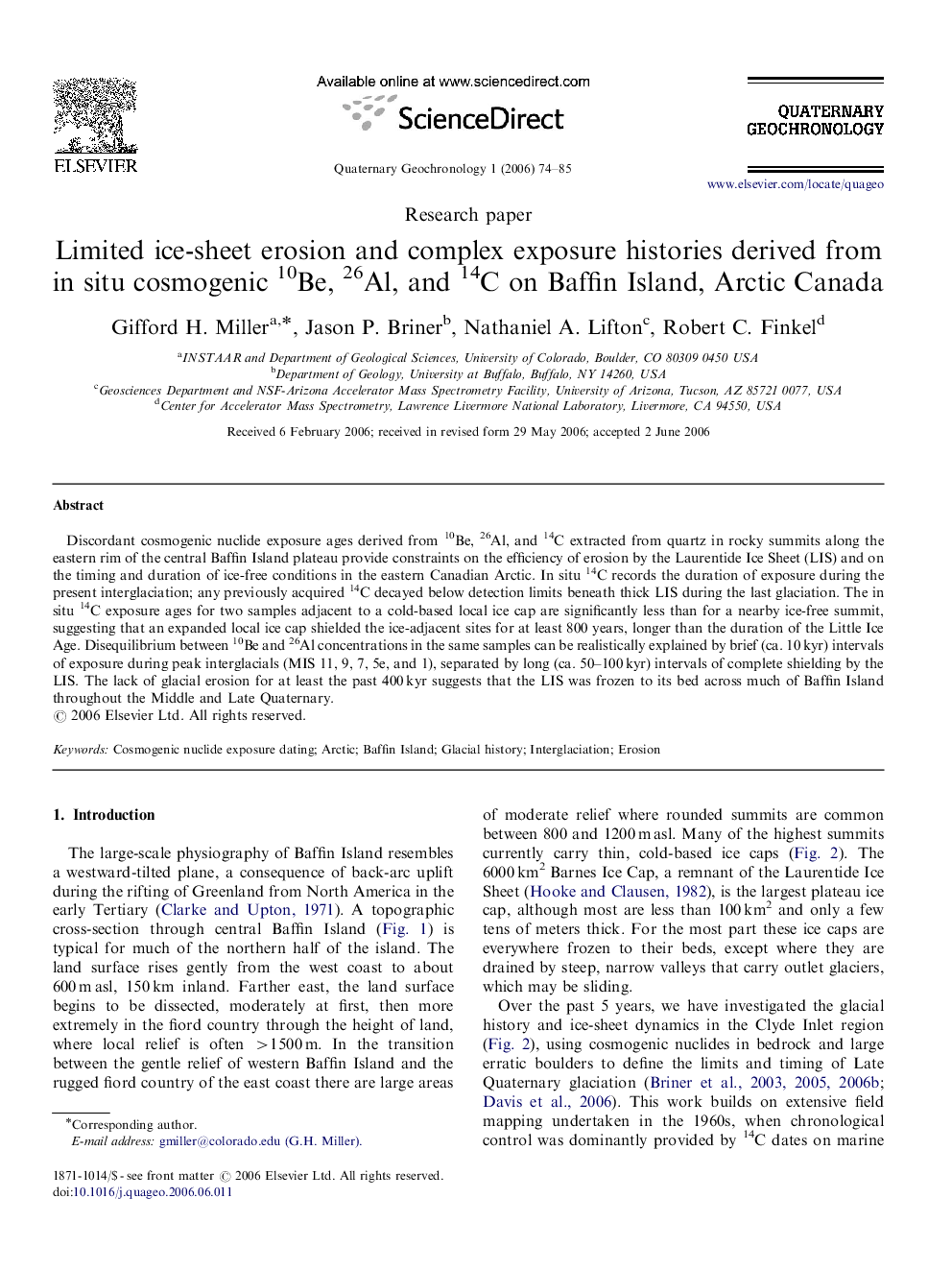| Article ID | Journal | Published Year | Pages | File Type |
|---|---|---|---|---|
| 4725351 | Quaternary Geochronology | 2006 | 12 Pages |
Abstract
Discordant cosmogenic nuclide exposure ages derived from 10Be, 26Al, and 14C extracted from quartz in rocky summits along the eastern rim of the central Baffin Island plateau provide constraints on the efficiency of erosion by the Laurentide Ice Sheet (LIS) and on the timing and duration of ice-free conditions in the eastern Canadian Arctic. In situ 14C records the duration of exposure during the present interglaciation; any previously acquired 14C decayed below detection limits beneath thick LIS during the last glaciation. The in situ 14C exposure ages for two samples adjacent to a cold-based local ice cap are significantly less than for a nearby ice-free summit, suggesting that an expanded local ice cap shielded the ice-adjacent sites for at least 800 years, longer than the duration of the Little Ice Age. Disequilibrium between 10Be and 26Al concentrations in the same samples can be realistically explained by brief (ca. 10Â kyr) intervals of exposure during peak interglacials (MIS 11, 9, 7, 5e, and 1), separated by long (ca. 50-100Â kyr) intervals of complete shielding by the LIS. The lack of glacial erosion for at least the past 400Â kyr suggests that the LIS was frozen to its bed across much of Baffin Island throughout the Middle and Late Quaternary.
Related Topics
Physical Sciences and Engineering
Earth and Planetary Sciences
Geochemistry and Petrology
Authors
Gifford H. Miller, Jason P. Briner, Nathaniel A. Lifton, Robert C. Finkel,
